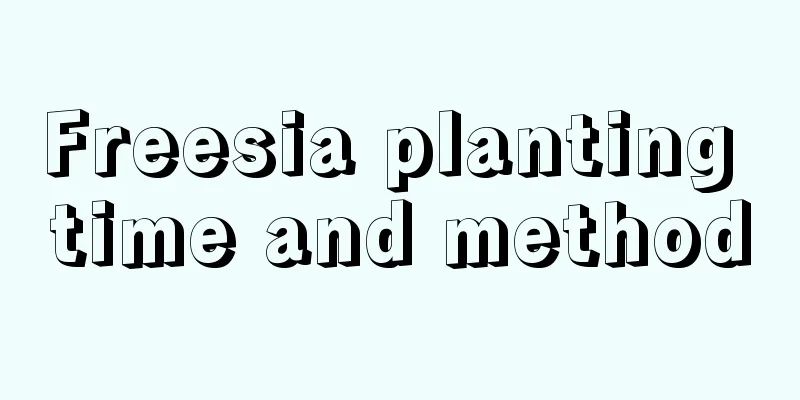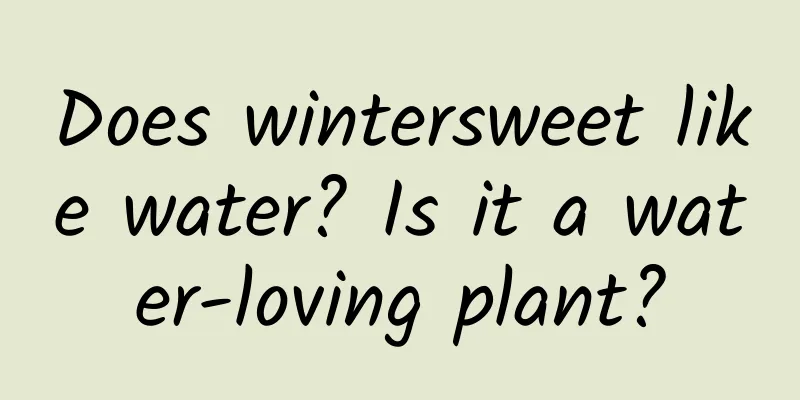Which month is generally suitable for planting peas in the north?

|
Peas are a kind of vegetable that many people like to eat. They are rich in protein, carbohydrates, dietary fiber, etc. They have a sweet taste and are very delicious. Many people want to grow peas, so which month is generally suitable for growing peas in the north? Let’s learn more about it below. Which month is generally suitable for planting peas in the north? Peas are spring vegetables and are suitable for planting in seasons with suitable temperatures. Generally, peas are planted in northern regions, with seedlings raised from early February to mid-March and cultivated outdoors from late April to early May. How to grow peas 1. Land preparation and fertilization Peas are highly adaptable to soil, but the soil must be well-drained, loose, full, fertile and rich in organic matter. The land must be deep plowed to a depth of 15-25cm. Before sowing, 500kg-1000kg of decomposed cow dung, sheep dung, chicken dung or compost, 30kg and 25kg of phosphorus and potassium fertilizers respectively can be applied. Increasing the application of phosphorus fertilizer will have a more obvious effect on increasing production. 2. Soaking seeds and accelerating germination Before sowing, the peas need to be germinated and the seeds need to be soaked in 41% salt water. After taking them out, pick out the pests and wrinkled and damaged seeds. Wash the remaining seeds with clean water, wrap them with gauze, spray the seeds with water every day to keep them moist. When all the seeds turn white, remove the gauze and place them in an environment of 3 degrees Celsius. Generally, the seeds will germinate in about 15 days. 3. Planting seeds Peas are sown in planting holes, with 2-3 seeds sown in each small planting hole. The distance between each planting hole needs to be adjusted to 11-21 cm. After sowing, cover with 5-6 cm of fine soil. If the climate is drier, the mulch can be thicker. 4. Field management The growth of pea roots and the development of rhizobia require good soil aeration. Weeds are easily bred in the seedling stage. Before setting up the frame, top dressing and tillage should be carried out three times. When the climbing species is growing, a trellis should be erected in time when the plant height is over 20 cm to facilitate the stems and vines to climb upward. In order to prevent the stems and vines of dwarf varieties from falling over, simple supports must be built. There is no need for irrigation in the Jiangnan region, but when sowing, if drought occurs, irrigation is necessary to facilitate germination. In addition, drought should also be prevented during flowering and pod formation. 5. Pest and disease control Common diseases and pests of peas include pea aphids, bean bugs, pea armyworms, pea black rot, and pea downy mildew. Ensure good drainage and avoid flooding of the roots. You can use yellow sticky paper, insect attractants, insect repellents, manual capture and other methods to prevent and kill insects. That’s it |
>>: How to grow grape hyacinth
Recommend
How to grow sunflower
1. Astigmatism environment It likes to grow in a ...
Disease and Pest Control of Rhododendron chinense
1. Leaf swelling It generally mainly harms the fl...
DIY Succulent Paving Stones
Prepare the Materials sand Either river sand or s...
When is the best time to plant honey plum?
Honey plum is a fruit that many people like to ea...
Cultivation methods and precautions of firecracker flower
How to grow firecracker flower Pot soil selection...
How to Propagate Aloe Vera
Aloe cutting propagation Cutting propagation is a...
Does watermelon prefer shade or sun?
Does watermelon prefer shade or sun? Watermelon i...
What month is suitable for planting morels?
When to plant morels Morels are a type of fungus ...
What to do about crabapple leaf rust? What's wrong with dry leaves?
1. What to do about leaf rust Rust disease is mor...
The flower language of Platycodon grandiflorum, the flower language of white Platycodon grandiflorum
1. Flower language introduction There are many me...
When is grapefruit ripe?
1. When is the season for maturity? Different var...
High-yield cultivation technology of Pleurotus geesteranus in factories
Pleurotus geesteranus , also known as ring-handle...
How to take cuttings of rose buds in spring
1. Cut the sprouts Around March in spring, you ca...
Cultivation methods and precautions of Tiger Pilan
1. Soil The roots of Sansevieria are fleshy roots...
What flowers are suitable for growing in Anyang? What are the city flowers and trees?
1. Climate characteristics of Anyang Anyang has a...









